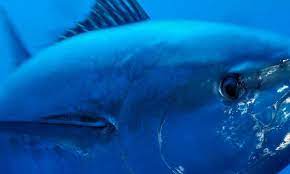Pacific leaders are developing a new warning system, not against hurricanes, tsunamis or even erupting volcanoes but rather the looming departure of vital tuna from their territorial waters in the years to come.
That so-called “advanced warning system” is part of a larger, US$70 million proposal currently moving through the United Nations to help Pacific Island countries better react to the changing global climate. Their communities are already bearing much of the brunt of that crisis even though they’re among those least responsible for it.
Now, 14 of those Pacific nations aim to better understand the full extent of the upheaval that they’ll face as climate change pushes significant masses of tuna out of their waters and farther east. Most depend heavily on fishing access fees, paid by foreign purse seine fleets, in order to sustain their economies.
“We want them to have the best science,” said Johann Bell, a senior director at Conservation International, which is helping the coalition develop its tuna warning system. “If the world is prepared to act in other aspects of climate change … there’s no reason why the world shouldn’t act on those tuna projections as well.”
Armed with the best possible projections, those Pacific nations can better negotiate on the world stage for the compensation they’ll need to offset the economic losses and damages due to the great tuna displacement, he added.
So far, the research shows that as much as 20% of the tuna stocks that swim through the waters of at least 10 Central and Western Pacific nations, such as the Solomon Islands, the Marshall Islands and Kiribati, are expected to relocate farther east over the next 30 years or so, as climate change alters the prevailing ocean weather patterns.
At that rate, those countries could collectively lose around US$90 million annually in fees that various foreign purse seine fishing fleets pay to access their waters, according to the research estimates. Purse seines are giant industrial fishing nets, and the fleets that deploy them across the Pacific largely hail from China, Europe, South Korea, Japan and the United States.
Such fishing fees help maintain the local roads, hospitals and other basic services across the Western and Central Pacific, according to the Pacific Community, a regional coalition of governments.
Still, countries and scientists need to better understand how climate change will affect the tuna stocks, Bell said.
Under a proposed “Regional Tuna Programme,” researchers would analyse tissue samples of yellowfin, bigeye and other tuna stock collected from fishing vessels that cover a massive expanse of ocean. Their goal would be to better understand the boundaries that separate the species, plus how they would behave under different climate scenarios and how that affects tuna-dependent nations.
Their findings, according to Bell, would flow from the Pacific Community to large inter-governmental groups that help manage and oversee fishing in the region, namely the Western and Central Pacific Fisheries Commission, the Pacific Islands Forum Fisheries Agency and the Parties to the Nauru Agreement.
Work on the proposal began in earnest this past October, Bell said, and it’s currently making its way through the UN, seeking US$70 million from the international body’s Green Climate Fund. It could be approved by 2024, according to a programme brochure.
That proposal would also address the Pacific’s worsening food security challenges, in addition to its looming economic woes linked to tuna.
Specifically, the tuna program aims to boost tuna supplies to the 4 million or so people who live along the coastlines of those 14 Pacific Island countries as the coral reef ecosystems degrade in their nearshore waters – also largely due to climate change.
Starting in January, fishery agencies from the 14 countries will be consulted on the program specifics to make sure that it meets their needs, Bell said. At that point, other members of the community will be able to weigh in on the proposal, he added.
It’s still unclear how exactly the coming tuna displacement might affect Hawaii and other U.S-controlled fisheries in the Pacific. The research that Bell helped with projects a slight uptick in tuna mass in the high seas areas near Hawaii in the coming decades.
Still, Mark Fitchett, a pelagic fisheries ecosystems scientist with the Western Pacific Regional Fishery Management Council, or Wespac, cautioned against looking at any climate change impacts as a benefit.
The research coming out of the Western and Central Pacific shows that Hawaii will soon have to grapple with its own, similar questions regarding the unintended consequences of climate change on its nearby fisheries, Fitchett said.
It will probably have to do similar studies on how climate change would affect Hawaii’s longliner fleet, which has to get back to port relatively quickly to satisfy the fresh tuna market, he said.
American Samoa, meanwhile, could feel some economic pain if the purse seiners that currently pay to fish in Central and Western Pacific waters have to move farther east to chase tuna, Fitchett added.
The economy of that American territory in the South Pacific heavily relies on the purse seine catch that’s offloaded to its lone remaining cannery in Pago Pago. However, if the fleet moves too far to the east the boats might have to dock at closer ports that make more economic sense, Fitchett said.
SOURCE: HONOLULU CIVIL BEAT/PACNEWS















